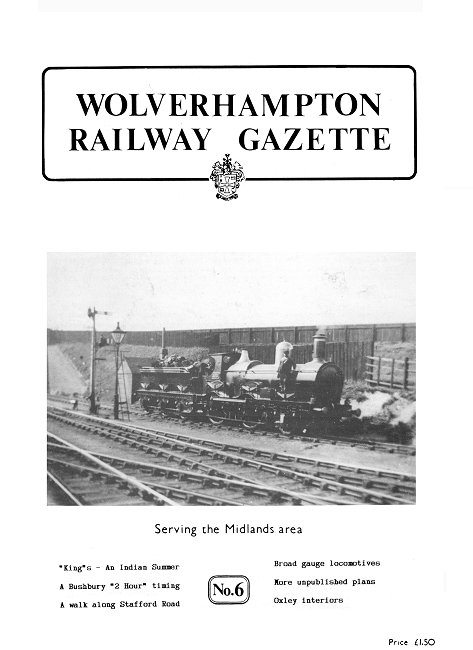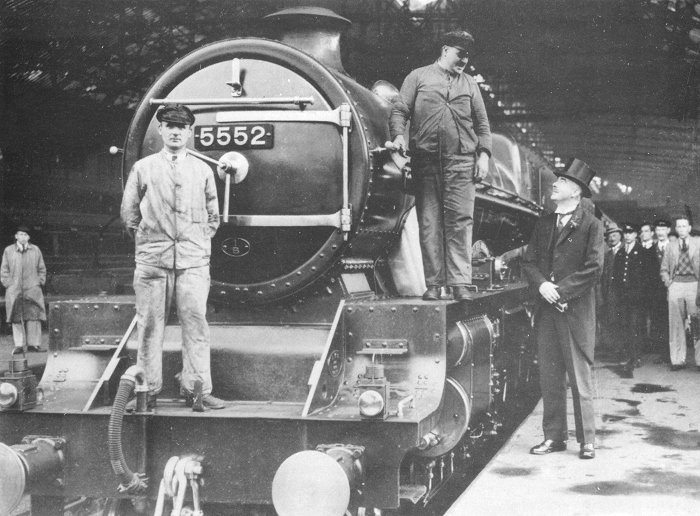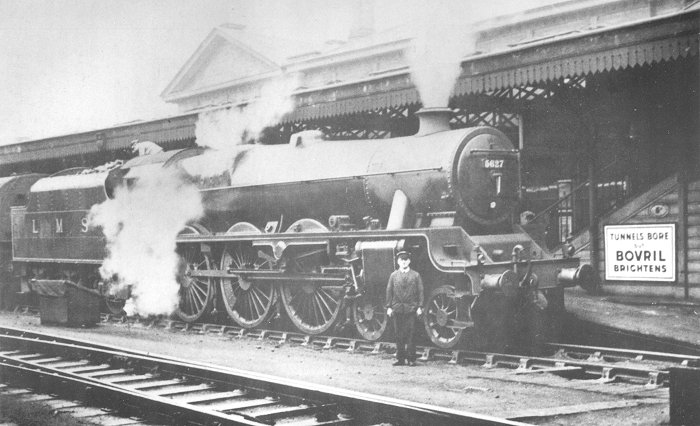The Sixth Edition
 |
This edition contains articles on early G.W.R.,
Wolverhampton based locomotives. Wolverhampton Low Level Station's
Indian Summer, Dudley Station, a walk along Stafford Street, Oxley
interiors, more on the S&B temporary station, Driver Cripps and Silver
Jubilee, and G.W.R. narrow gauge locomotives. 'Wolverhampton Based
Locomotives' describes some of the early locomotives that worked in the
area in the 1850's and 60's, 'An Indian Summer' describes the busy few
years at the Low Level station, when the West Coast main line was being
electrified. 'Driver Cripps and Silver Jubilee' is an account of the
excellent work that was carried out by the famous LMS Jubilee on its
visit to Wolverhampton in 1935.
The cover photograph shows G.W.R. number 3231, at the south of the
Low Level Station. |
Driver Cripps and 'Silver
Jubilee'
| In 1935 the L.M.S. accelerated the timing of its Birmingham-London
expresses to five minutes under the two hours that had been the norm
since 1902. As in 1902, the locomotive and crew on this historic
occasion worked the train from Wolverhampton, the two hour tag applying
only to the Birmingham-London section. The L. M. S. one hour fifty five
minutes timing was not to be bettered during the steam age, although
both the L.M.S and G.W.R. considered such accelerations. The following
article is reproduced from the Journal of the L.M.S. Operating
Department ‘On Time’ November 1935: General success attended the introduction on Monday, September 30, of
the Winter Train services which feature a number of important
improvements and accelerations. To driver J. Cox, Fireman J. R. Cripps
(both of Bushbury Shed), and guard H. Oakins, of Euston, fell the honour
of forming the train crew of the inaugural express to run between Euston
and Birmingham in the accelerated timing of 115 minutes. The first train
to run to this schedule, the 9.15 a.m. from Euston, arrived at
Birmingham on time after covering the 107.5 miles from Willesden
Junction in 104 minutes, at an average speed of 62 m.p.h.
|
|

Driver Cox and Fireman Cripps at Birmingham
New Street. |
| Bushbury enginemen (Driver J. H. Green and Fireman
D. James) were also responsible for another important inauguration,
making the first run of the 6.20 p.m. Birmingham-Euston express
(5.40 p.m. ex Wolverhampton) to the two-hours schedule with three
stops. The schedule of this train between Rugby and Watford, 65.1
miles in an hour, constitutes a new record for the fastest
start-to-stop run on the L.M.S. system.
This section was easily
completed inside booked time, an average of almost 74 m.p.h. being
maintained over the 50 miles between Welton and Hemel Hempstead
stations.
Despite delays by p.w. and signals amounting to 11 minutes overall
between Wolverhampton and Euston, the terminus was reached before time.
On both these journeys the 4-6-0 engine, No. 5552 'Silver Jubilee' was
employed - a fitting compliment to history, since it was one of the Webb
Compounds of the L. & N.W. Jubilee class which worked the first two-hour
express from Birmingham to Euston just 33 years previously. The loads of
the 9.15 a.m. from Euston and the 6.20 p.m. from Birmingham on September
30 were 336 and 249 tons respectively, and the guard on the latter train
was H. Ledward (Stafford).

Driver J. R. Cripps stands
before unnamed L.M.S. Jubilee class 4-6-0 number
5627 (later "Sierra Leone") at Northampton. |
All material courtesy of Irene Cripps. |

|
|

|
|

|
| Return to
Edition 5 |
|
Return to
the Beginning |
|
Proceed to
Bushbury Shed |
|